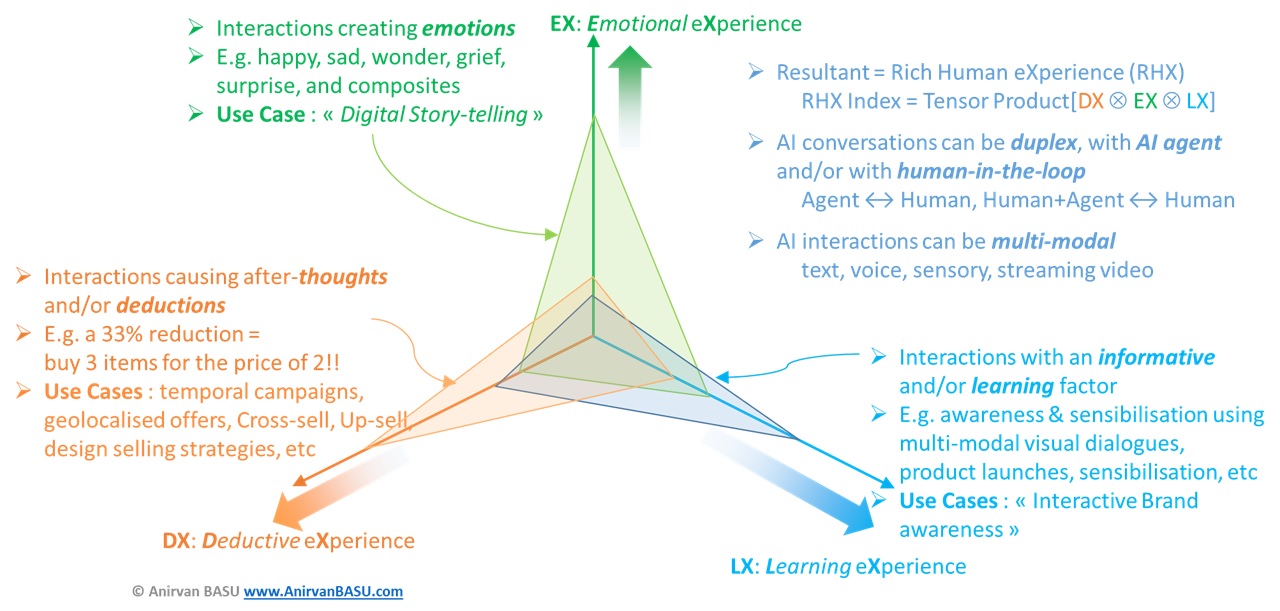
Rich Human Experiences (RHX)
Introduction
It is now an established fact that modern technologies such as Artificial Intelligence (AI), Virtual Reality (AR/VR) and Connected Objects (IoT), that have resurfaced over this current decade are going to stay and create a persistent impact in our everyday lives – personal or professional. Soon in the future, we are going to interact with agents, environments and objects that use a combination of the above technologies. In this context, we explore a framework for Rich Human Interaction [RHX] that will help us in the following two objectives:
- Objective 1 – determine the degree of complexity of RHX that is required for an interaction scenario: This aspect is important for analysing and understanding the complexity of an interaction challenge.
- Objective 2 – design the right level of RHX for the successful and efficient application of the technologies mentioned above: This aspect is required to establish the required level of human confidence in the above technologies.
While a Rich Human Interaction will promote a fast uptake of AI and AR/VR-based solutions in the respective sector, an uncontrolled or unjustified usage of these technologies will immediately reduce the human confidence in that sector on AI and AR/VR-based solutions.
In the subsequent section we explain some observations from the introduction of the above technologies focusing with examples from certain sectors to explain the need for Rich Human Experiences. Finally, we present the framework in its details.
Observations & Symptoms
Human interactions with agents, environments and objects are not always the same. They depend on several factors – context, need or intent, wish, etc.
The RHX Framework
In this section we present the RHX Framework. The objective of this section is explain the following constructs:
- Three principal dimensions: Explain the 3 principal dimensions present in any Rich Human Experience,
- Scenario decomposition: Given a Human Interaction scenario, we decompose it into the 3 principal dimensions, to understand precisely the key aspects / requirements of the interaction,
- RHX design: once we have analysed and extracted the scenario requirements in terms of the 3 key dimensions, we seek the pertinent technologies that are applicable in each dimension to enhance the Human Experience (towards a Rich Human Experience). The final resultant RHX is a vector sum of the enhancements in each dimension.
- RHX Measurement: We draw the limitations of any technology and explore if and how they can be complemented by other technologies without rendering it further complex.
We start by explaining the 3 principal dimensions. They are as follows:
- The Learning Experience (LX):
- The Deduction Experience (DX):
- The Emotional Experience (EX):
The goal is to decompose each User Experience scenario into the above three components to assess different elements. For e.g. end-user requirements, UX design aspects, measure impact to user, etc.
Stay tuned to this page – Further details coming soon.
